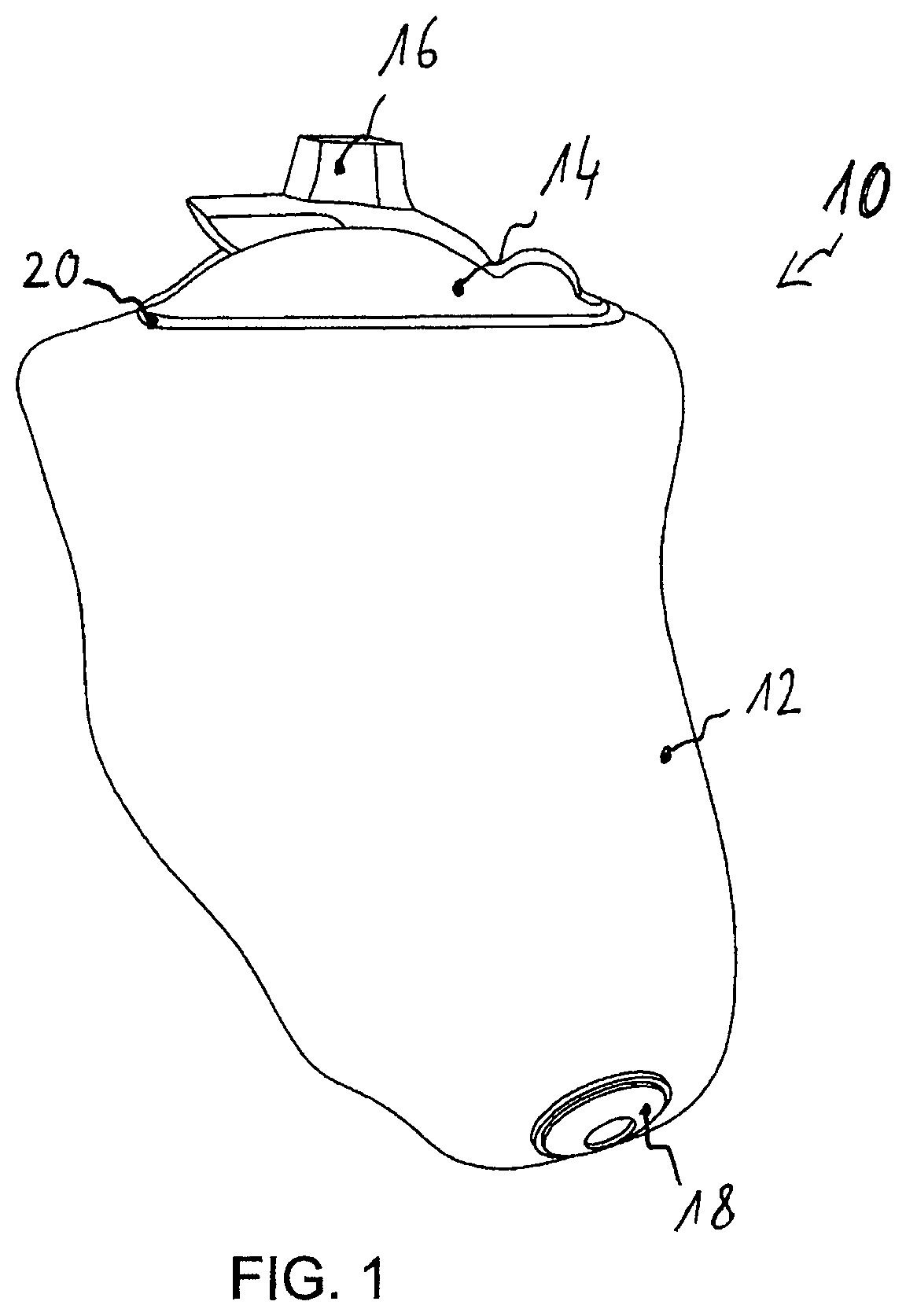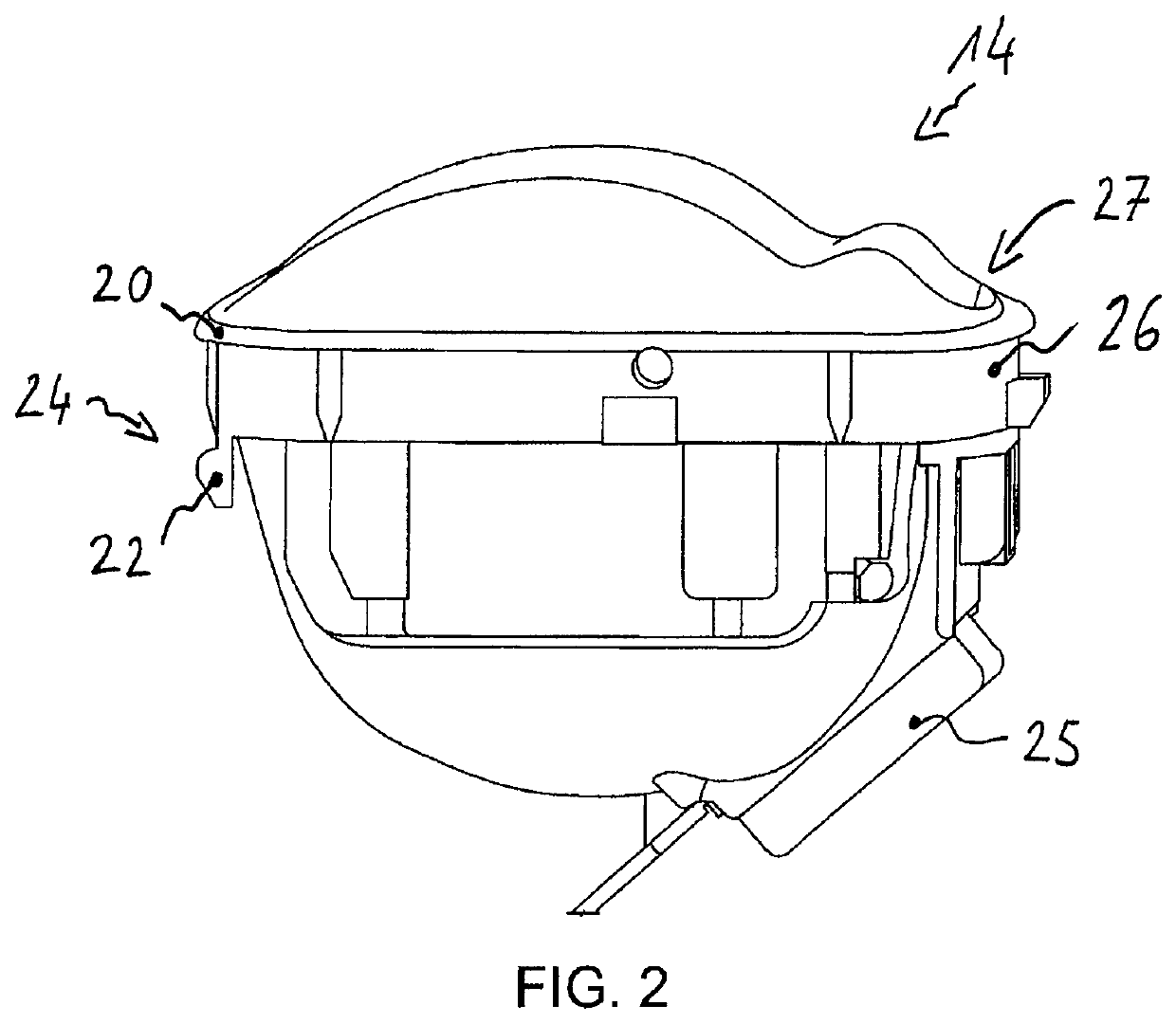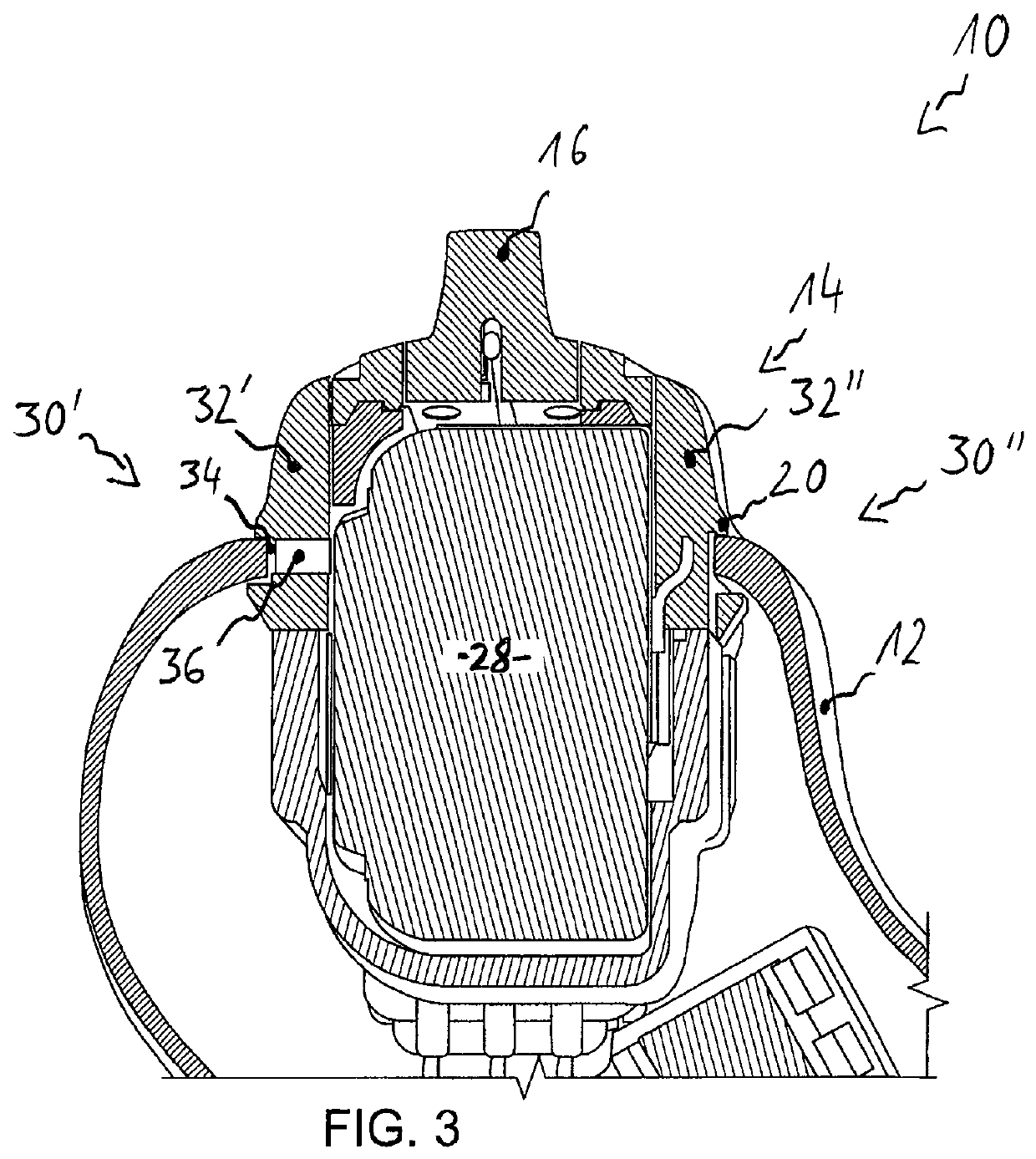[0005]The present invention is directed to a module of a hearing device, wherein said module is removably connectable with a housing of the hearing device, said module being prepared for insertion of a removal tool, wherein said module comprises at least two side walls opposing each other, said side walls are provided with a first engagement means, and said side walls are deformable such to allow engagement of the first engagement means and a second engagement means formed on an anchoring portion of the removal tool. Hence, the present invention provides a module which can be reliably separated from the housing without the need of additionally mechanical parts. Therefore, provided is a module which is compact in size and which additionally allows to be separated from the housing in a reliable and non-destructive way. Further, complexity is reduced.
[0009]In an embodiment of the proposed module the side walls comprise a metal sheet. The metal sheet can be deformed by clamping the side walls of the module in a direction to each other such to achieve the above-mentioned engagement. In an example, even if the clamping force is released, this deformation can be maintained. In another example, if the clamping force is released, the metal sheets resume its former shape. Advantageously, the metal sheets additionally strengthen the side walls such to improve the integrity of the module.
[0010]In an embodiment of the proposed module the side walls are configured to be inwardly deformed when applying forces to outer surfaces thereof in directions to each other, and wherein the first and second engagement means are adapted to be engaged during an inward deformation of the side walls and to be disengaged when the side walls are not inwardly deformed. This embodiment allows proper engagement of the first and second engagement means by simply applying forces to outer surfaces of the side wall, wherein said forces are applied in directions to each other, i.e. inwardly in relation to the module. The feature of disengagement between the first and second engagement means when the side walls are not inwardly deformed allows to proper release the module from the removal tool once the module is separated from the housing. Further, proper reuse of the module can be achieved.
[0011]In an embodiment, the module is removably connectable with the housing by means of a click mechanism formed at the outer surface of the side walls, said click mechanism being prepared to connect the module to the housing upon pushing the module into an opening of the housing, and to release the connection with the housing upon inward deformation of the side walls. The click mechanism can be adapted to allow separation of the module from the housing once a pull-out force, which is applied to the module in relation to the housing, exceeds a predetermined separation-threshold. Additionally, or as an option, the click mechanism can be released by deforming outer surfaces of the module in directions to each other such to deform thereof. While deforming the outer surfaces of the module, at least portions of the hearing device housing can be released from respective recesses which are formed into the outer surfaces of the module. Therefore, the module can be pulled out easily without further intervention. The click mechanism can allow a secure stay of the module in the hearing device housing. Further, said click mechanism can compensate possibly printing tolerances of the hearing device housing.
[0013]In an embodiment, the module comprises a deformable base-part and a substantially non-deformable sub-module, wherein the base-part and sub-module are connected together by a snap mechanism or an adhesive bonding, wherein the base-part provides at least one of: an electrical connection between the sub-module and the base-part, and a sound inlet path between the sub-module and a sound entry. The sub-module can comprise components such as at least one microphone, processor, switch, etc. The base-part may provide for electrical connections of the sub-module to other components of the module such as battery contacts to provide power to the sub-module. The base-part may further provide for an acoustical connection between the sub-module and the ambient environment. Such a sound inlet path or rather acoustical path allows for example placing the sub-module comprising the microphone of the hearing device at a lower end of the base-part in order to save space and to build a module with a smaller diameter thus allowing to design a more compact hearing device. The module may comprise a sealing between the sub-module and the base-part and / or the base-part and the inner volume of the housing. The sealing can reduce the risk of acoustical feedback due to sound leakage. The sealing can further prevent dirt from entering into the hearing device, it may also have a mechanically stabilizing effect, thus securing the mounting position of a sub-module to the base-part and / or the base-part to the housing. Advantageously, the repair of the module can be simplified. In an example, a defective component, such as the microphone, can be replaced just by replacing the sub-module. The sub-module can be connected to the base-part by a snap-in mechanism. The sub-module could be mounted from the inside of the base-part, for example through the battery compartment, thus allowing a substitution of the sub-module without removing the base-part from the housing. Since the module could be detached from the housing in an easy way, the sub-module could also be mounted from the outer side of the base-part. It is also possible to connect the sub-module by gluing it to the base-part. The glue can be selected such to create a relatively weak adhesive bond between the base-part and the sub-module thus allowing a non-destructive separation. While such a module could be used in hearing devices comprising a faceplate, it is particularly beneficial in custom made hearing devices where the housing comprises a shell made of metal, in particular titanium.
 Login to View More
Login to View More  Login to View More
Login to View More 


